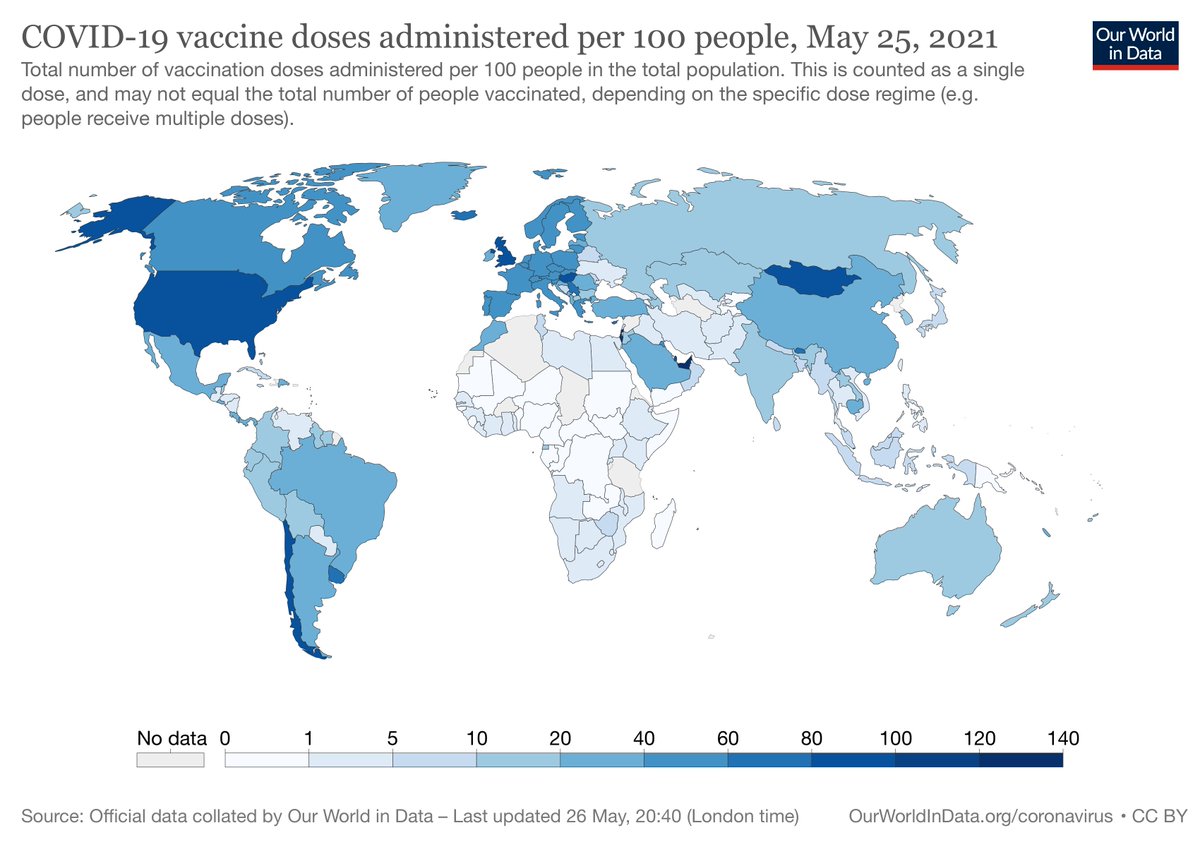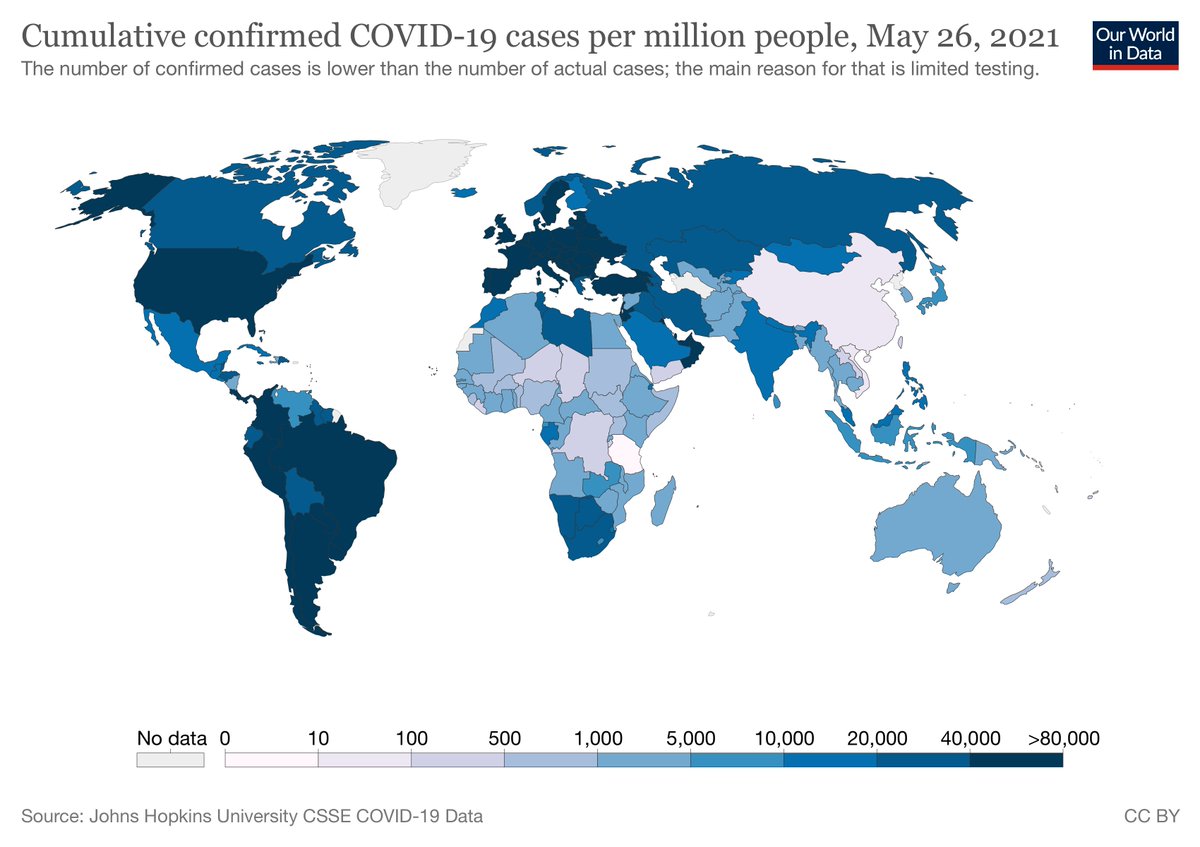
Our newest #COVID19 paper (with Marcelo Ferreira @ChikinaLab @WesPegden @rjaaguas) is on medRxiv. Individual variation models applied to England and Scotland.
Frailty variation models for susceptibility and exposure to SARS-CoV-2 medrxiv.org/content/10.110…
Frailty variation models for susceptibility and exposure to SARS-CoV-2 medrxiv.org/content/10.110…
With 20% of their populations immunised by natural infection and their vulnerable vaccinated, many countries, like England and Scotland, appear to be in a comfortable position to redirect remaining vaccines to more susceptible regions.
The models we have been using throughout the pandemic were originally posted on 27 April 2020:
medrxiv.org/content/10.110…
medrxiv.org/content/10.110…
Mathematical derivations here:
arxiv.org/abs/2008.00098
arxiv.org/abs/2008.00098
Interim analysis shared in July 2020 presented one scenario for how pandemic might unfold assuming particular slope for how contacts were reactivating exiting first lockdown (parameter T2=120 days in new preprint):
medrxiv.org/content/10.110…
medrxiv.org/content/10.110…
T2=120 days was based on google mobility data back then. Since those early days we have been inferring T2 from model fits to pandemic trajectories. We find T2 to be larger; and as T2 goes to infinity herd immunity threshold in England and Scotland tend to around 30%.
Note that this change in T2 is sufficient to explain the difference between our early projections and how death series have unfolded in England. And even if we push T2 towards infinity, HIT remains relatively low.
• • •
Missing some Tweet in this thread? You can try to
force a refresh





